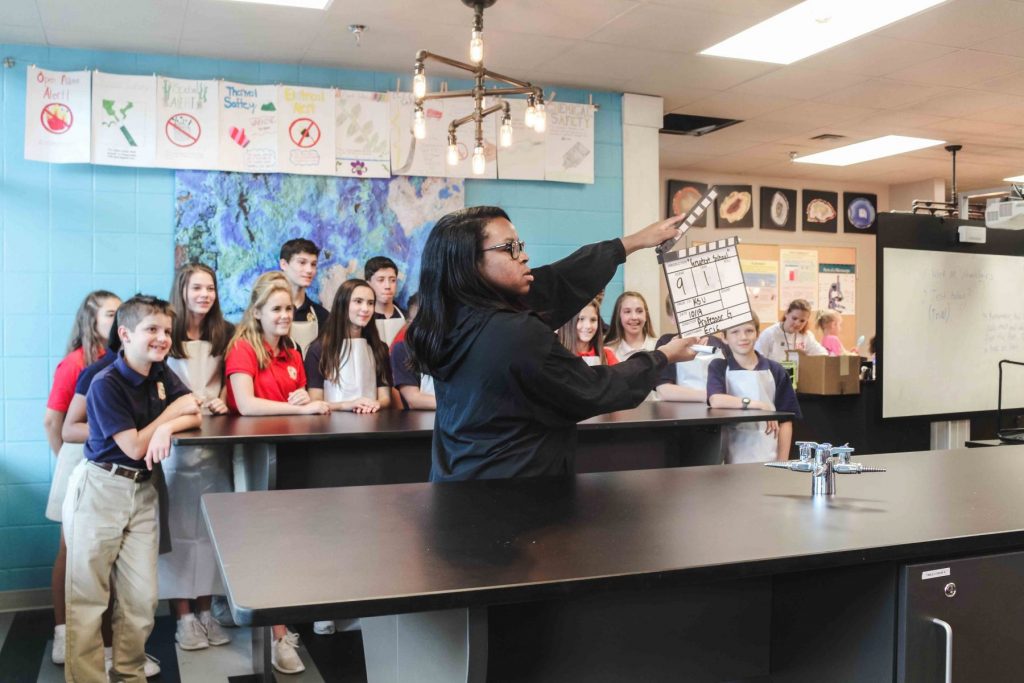The publisher Houghton Mifflin Harcourt recently released a study on teachers’ perspectives toward a wide range of topics, including technology in the classroom. One question was curiously worded. “If you realized the full potential time savings from technology,” the survey asked, “how would you spend your time?” It might have been phrased another way: “Does in-classroom technology and edtech actually save teachers time?” However you phrase the question, it isn’t easy to determine the answer, but it would help to know. Plenty of edtech companies and many schools that adopt educational technologies cite time saving as a benefit. Evidence that these new technologies do save time is elusive.
The Time-Saving Promises of Technology
The Edtech Podcast has two episodes on the subject of time-saving promises. In the first, Shireland Collegiate Academy Assistant Principal Alan Crawford affirms that tech has saved teachers and administrators at his Birmingham, United Kingdom school “thousands of hours.”
In a listicle on his blog The Edvocate, author and Associate Professor of Education Matthew Lynch writes, “Before the rise of Edtech, teachers spent long hours creating lesson plans and grading papers. With technology and the internet, teachers can find lesson plans and free materials online. Plus, apps and programs designed to grade student work can save even more time.”
Edtech developers and technologists of all stripes have long sung the praises of their creations and their ability to save users time.
Renowned developer Andy Hertzfeld recalls on a folklore.org post a moment during the development of Apple’s Macintosh personal computer. Steve Jobs reportedly pushed his developers to ensure the device booted up in the fastest amount of time possible. While developer Larry Kenyon thought there were a few other areas that could be improved, Jobs remained fixated on the startup time.
As Jobs reportedly told Hertzfeld, “You know, I’ve been thinking about it. How many people are going to be using the Macintosh? A million? No, more than that. In a few years, I bet five million people will be booting up their Macintoshes at least once a day.”
Jobs also offered a compelling rationale for decreasing the Macintosh’s startup time: “Well, let’s say you can shave 10 seconds off of the boot time. Multiply that by five million users and thats 50 million seconds, every single day. Over a year, that’s probably dozens of lifetimes. So if you make it boot ten seconds faster, you’ve saved a dozen lives. That’s really worth it, don’t you think?”
This imagination of technology obscures the bigger picture. While most individuals won’t grow more productive with an extra 10 seconds in their day, some platforms and technologies undoubtedly save teachers time. Plug-and-play lesson plans, for example, save teachers time by enabling them to forgo a task that once took numerous hours every week. But other technologies also add time to a teacher’s schedule. Faster and easier communication via social media and email allow teachers to more efficiently reach parents. But those avenues often enable parents to get in touch with teachers at a higher frequency.
Efficiency Is not a Default Setting
While many factors are at work, U.K. teachers, who teach in schools that have some of the highest tech adoption rates in the world, report working longer hours than educators from almost every other country.
Implementing new technology in the classroom can also add time to a teacher’s work week.
As former teacher and current Director of Business Development for Zinc Learning Labs Collette Coleman wrote for EdSurge:
If edtech employees were to spend a day teaching, they’d see just how many programs teachers are expected to implement, and just how little instructional time they really have.
This stressful combination of too many programs and too little time doesn’t just lead to initiative fatigue, but it also leaves educators screaming “no” (politely) to new pilots, free products and even tools they were “voluntold” to try by their admins.
A new offering might legitimately save teachers time. But once in educators’ shoes, edtech salespeople would see that the time it takes to get going with anything new, no matter how seemingly small and simple, can be too burdensome. Sometimes there just isn’t room to add in a new product—no matter how great it may be.
Even when edtech is up, running, and optimized for a particular teacher’s style, there is often further additional work to do. This often relates to updated methods of student assessment. Many schools around the world have come to realize that, while giving students a letter grade on an assignment or entire class simplifies the grading process, it doesn’t provide a very clear picture to parents, the student in question, or future teachers on how the student is doing.

Competencies and Data Management
In answer, many schools have begun implementing assessments based on skills or competencies. Often following government-mandated education standards, students increasingly are judged by their ability to demonstrate specific knowledge or skills.
This competency-based assessment also allows educators to further personalize learning. If an educator can more specifically pinpoint where a student or a group of students needs more work, they can target that area specifically, while allowing others to move on.
Many personalized learning software solutions seek to aid in this task further, by tracking student progress and recommending which student needs help in a given field.
But this style of assessment also asks teachers to keep track of more data.
“Grading—we call it scoring now—is really supposed to be a communication,” said the Principal of Bellows Free Academy in St. Albans, Vt. Chris Mosca. “Because now there are multiple data points, that becomes a challenge. The other [letter grading] system could communicate something, but it wasn’t broken out into discreet skills and knowledge. Everyone seemed to walk around with some general idea of what a kid can know and do. To record and report it effectively and efficiently is still a challenge.”
In the United Kingdom, policymakers and administrators have begun to recognize the huge burden presented by data input and management. A November report by the Centre for Education Improvement Science (commissioned by the Secretary of State for Education Damian Hinds), Making Data Work, describes the issue.
According to the authors:
Time associated with data collection and analysis is not as significant as other parts of a teacher’s job, such as marking and planning. However, it is most frequently cited as the most wasteful due to a lack of clarity amongst teachers as to its purpose. Clearly the way that data is used across schools varies considerably by phase, size of school, experience of teaching staff and subjects taught. However, some common themes in its use have emerged, particularly around the lack of understanding about reliability of data and suitability for the use to which it is put. Data is often used too much for monitoring and compliance, rather than to support pupil learning and school improvement. This audit culture can lead to feelings of anxiety and burnout in staff.
The U.K. government has since responded with a set of best practices for technology adoption, acknowledgement from Secretary Hinds, and even a regularly updated and totally disarming blog dedicated to the subject.
This issue, furthermore, is not unique to education. In a November issue of the New Yorker, author and surgeon Atul Gawande set out to explain his essay title: “Why Doctors Hate their Computers.”
Like teachers, doctors find themselves spending more and more time entering data about their patients and maintaining their files in increasingly extensive databases.
“[O]ur systems are forever generating alerts about possible connections—to the point of signal fatigue,” Gawande writes. “Just ordering medications and lab tests triggers dozens of alerts each day, most of them irrelevant, and all in need of human reviewing and sorting. There are more surprises, not fewer. The volume of knowledge and capability increases faster than any individual can manage—and faster than our technologies can make manageable for us. We ultimately need systems that make the right care simpler for both patients and professionals, not more complicated. And they must do so in ways that strengthen our human connections, instead of weakening them.”
There is no doubt that some edtech has saved some teachers time in certain areas. But edtech has also added heaps to teachers’ plates. In education and other fields, tech companies shouldn’t always be so sure their solutions will save time.









No Comments